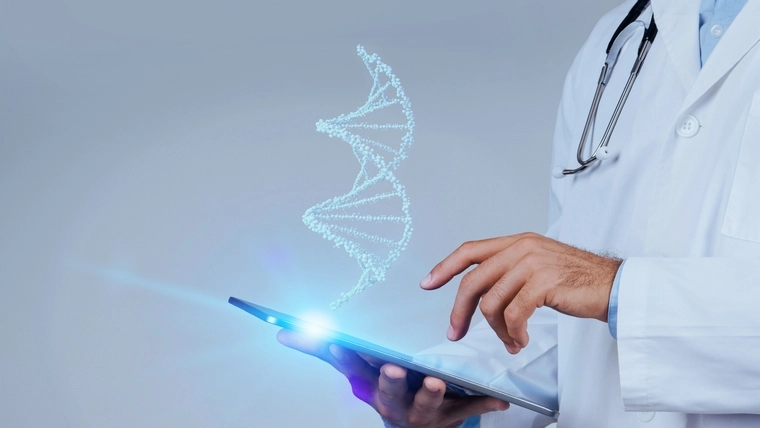
What is a Regenerative Medicine Center?
Regenerative Medicine Center is a health unit that supports the body's natural healing processes and offers innovative methods in the treatment of diseases. Regenerative medicine aims to repair and restructure damaged tissues and organs. Treatments applied in this field aim to improve the quality of life of patients by providing renewal of cells, tissues and even organs. Regenerative medicine centers are considered centers of advanced scientific studies such as biotechnology, genetic engineering, stem cell research and are managed by teams specialized in this field.
About the Center for Regenerative Medicine
Regenerative medicine aims to use the body's own healing potential by going beyond traditional treatment methods. Various innovative techniques such as genetic material modification, stem cell treatments, bioengineering applications and tissue engineering are used in these centers. Regenerative medicine centers offer personalized solutions to patients' health problems, not only treating the disease but also targeting the patient's general well-being. Studies conducted in these centers offer revolutionary developments, especially in the treatment of chronic diseases, injuries and degenerative diseases.
Who are the Specialists in the Regenerative Medicine Center and What Are Their Duties?
The specialists working in regenerative medicine centers are usually professionals from various disciplines such as medicine, biotechnology, genetics and bioengineering. These specialists include stem cell biologists, genetic engineers, bioengineers, immunologists and clinical researchers. The specialists' duties include planning the treatment process of patients, developing personalized treatment methods, conducting clinical research and implementing innovative treatment options. In addition, medical doctors working in these centers monitor the general health status of patients and provide support at every stage of the treatment process.
What is done in a Regenerative Medicine Center?
The Center for Regenerative Medicine offers a variety of innovative treatments that aim to treat diseases by using the body's natural healing potential. These centers develop new treatments for chronic and long-term diseases such as heart disease, stroke, diabetes and osteoarthritis. The aim is not only to manage the disease, but also to support the body's ability to repair, renew and restore well-being.
Regenerative medicine offers a wide range of treatments, from prenatal surgical interventions to lifelong degenerative and disabling diseases. These treatments trigger the body's spontaneous healing response, offering solutions to optimize patients' health and quality of life. As a result, advanced treatment applications targeting the root causes of diseases and supporting the body's repair and regeneration processes are carried out at the Regenerative Medicine Center.
Clinical Applications in the Field of Regenerative Medicine
Clinical applications in the field of regenerative medicine include innovative treatments that aim to increase the body's natural healing and regeneration capacity. These applications hold great promise, especially in the treatment of chronic and degenerative diseases. Here are the main clinical applications in this field:
- Stem Cell Treatments: Stem cells are cells used to regenerate damaged tissues. Stem cell treatments are widely used, especially in bone marrow transplantation, cartilage repair, skin regeneration and neurological disease treatment. Since these treatment methods are performed with materials obtained from the patient's own cells, they have a high rate of acceptance by the body.
- Gene Therapies: Gene therapies, which have revolutionized the treatment of genetic diseases, focus on correcting or changing diseased genes. Gene therapy is used in the treatment of hereditary diseases as well as diseases such as cancer.
- Tissue Engineering: Lab-grown tissues offer a solution for patients awaiting organ transplants. Tissue engineering practices use bioengineering techniques to reconstruct damaged or lost tissues. These techniques play an important role in reducing the risk of rejection during organ transplants.
- Platelet Rich Plasma (PRP) Treatment: PRP treatment is performed by injecting enriched platelets (thrombocytes) obtained from the patient's own blood into the damaged tissue. This treatment method is widely applied in areas such as musculoskeletal injuries, sports injuries and skin regeneration.
- Immunotherapy: Immunotherapy is another important application of regenerative medicine, which aims to strengthen the immune system to fight cancer and other diseases. This treatment method targets and destroys diseases by using the body's natural defense mechanisms.
- 3D Bioprinting Technology: 3D bioprinters are used to produce organs and tissues in a laboratory environment. This technology allows for the production of exact replicas of the organs that patients need, which can significantly reduce organ transplant waiting times.
These clinical applications in the field of regenerative medicine improve the treatment processes of patients while also providing innovative solutions that shape the future of medicine. These treatments aim to increase the quality of life of patients and to address the root causes of diseases.
aims to develop solutions.
What Cellular Therapy Applications Are Performed at the Regenerative Medicine Center?
Cellular treatments applied in regenerative medicine centers generally focus on stem cell treatments and cellular regeneration techniques. These treatments are used to renew damaged or diseased cells. Cellular treatment methods are widely applied in the treatment of bone marrow stem cell treatments, cartilage repair, skin regeneration and neurological diseases. Since these treatments are performed with materials obtained from the patients' own cells, the rate of natural acceptance by the body is quite high and the risk of side effects is minimal. Regenerative medicine centers aim to maximize the treatment processes of patients by continuously developing these cellular treatment methods.
